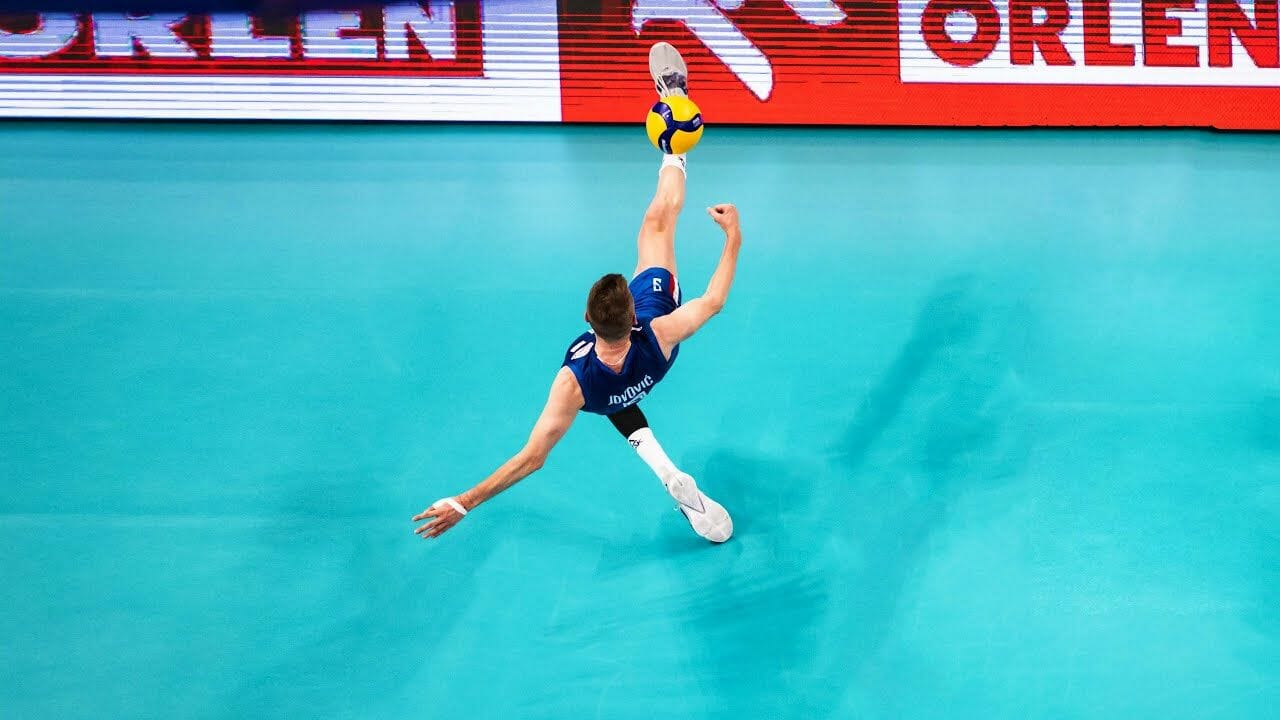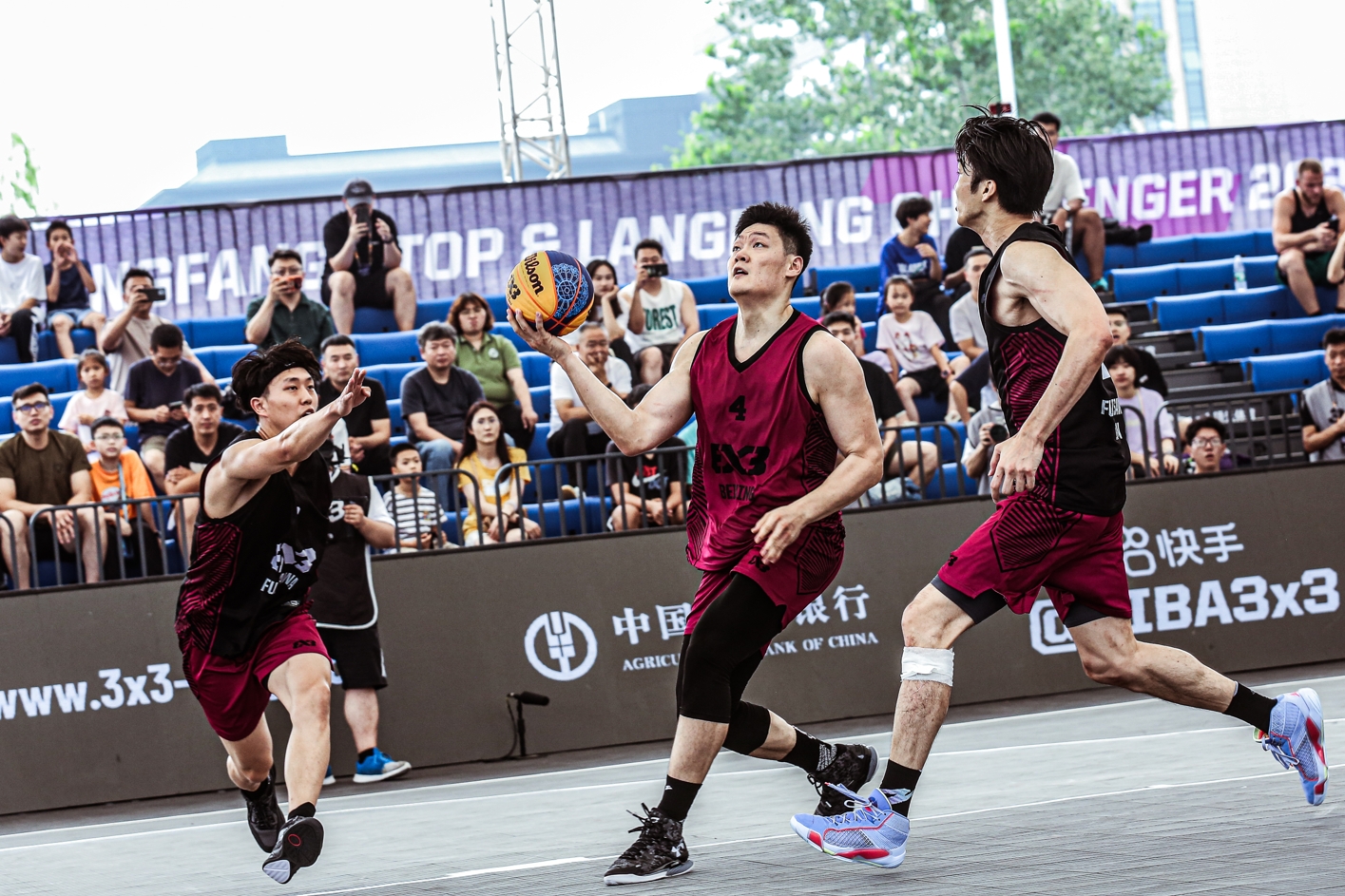Millions of people all over the world play volleyball, as it is one of the most popular sports. It is known for its fast-paced action, teamwork, and skillful ball handling. But what happens if the ball is out of reach and a player instinctively uses their foot to make contact?
Can you kick a ball in volleyball? The answer may vary depending on the official rules of organizations. In this blog post, we will explore the rules and regulations surrounding ball contact in volleyball, including whether or not kicking is allowed.
It does not matter if you are a player, an educator, or a fan of the sport; this article will provide you with all the information you need to understand this unique aspect of the game.
Let’s see if can you kick ball in volleyball.
The Legality of Kicking in Volleyball
As per the official rules of volleyball, kicking the ball is not a recognized move. The Fédération Internationale de Volleyball (FIVB), the governing body of the sport, stipulates that the ball must be hit with the hands or arms. This rule ensures consistency and maintains the essence of the game. While unintentional kicks may occur during the chaos of a rally, deliberately kicking the ball would result in a foul.

When to Avoid Kicking the Ball
In the game of volleyball, there are certain situations where kicking the ball is not allowed. Whether you are playing in a professional league or enjoying a casual game at the beach, it is essential to be aware of the rules surrounding the act of kicking the ball.

This section will provide insights into when you should avoid kicking the ball during a volleyball match.
Read More
How Long is a Volleyball Game?
Serving in Volleyball.
Serving is one of the instances when kicking the ball is not permitted. Regardless of the league or level of play, it is strictly against the rules to kick the ball when serving in volleyball.
This rule is outlined in the serving regulations established by the FIVB rulebook. According to these rules, players must make contact with the ball using a single hand when serving. Incorporating techniques to increase vertical jump for volleyball can enhance your serving prowess.
This means that any contact made with the ball using body parts other than the hand is considered a violation. This rule applies to indoor and beach volleyball, ensuring fair play across all game formats.
Avoid Outbursts of Anger
We’ve all experienced moments of intense anger or frustration where we feel the urge to kick or punch something. The frustration of a missed opportunity or a poor performance can sometimes push us to lash out and kick the ball in frustration.
However, when it comes to volleyball, it is strongly advised against giving in to these impulses. It is crucial to remember that such actions can have negative consequences. In training sessions, kicking the ball out of anger can create a negative impression among teammates and coaches.
In a match, it can result in a yellow or even a red card from the referee. Maintaining composure and finding healthy ways to channel our emotions is important.
Negative Impression in Training
In a training session, kicking the ball out of frustration can leave a bad impression on teammates and coaches. It displays a lack of control and discipline, which are important qualities in any sport.
Instead of venting your frustration by kicking the ball, finding healthy and constructive ways to channel your emotions, such as taking a deep breath, regrouping, and improving your skills, is better.
Sportsmanship
One of the fundamental principles of sports is displaying good sportsmanship. Kicking the ball out of anger goes against the spirit of fair play and respect for opponents.
It is important to uphold the values of honesty and sportsmanship, even in challenging situations. Instead of reacting impulsively, it is advisable to take a moment to calm ourselves and find constructive ways to deal with frustration.
Penalties in a Match
In a competitive match, kicking the ball due to anger can lead to penalties from the referee. Depending on the severity of the offense, players may receive a yellow card or a red card, which can result in disciplinary actions such as temporary suspensions or ejections.
These penalties affect the individual player and have consequences for the entire team, as they may have to play at a numerical disadvantage.
Maintaining composure and dealing with emotions instead of kicking the ball is the best choice. By staying calm and composed, players can make better decisions on the court and contribute to the overall success of their team.
In Volleyball, When You Can Kick the Ball
In volleyball, players primarily use their hands to hit the ball. However, there are certain situations where using your legs, specifically kicking the ball, can be a viable option.

In this part, we will explore when kicking the ball in volleyball is acceptable, with a particular focus on defense.
Defense
One of the most critical moments in a volleyball game where players may consider using their legs is during the defense. Defense is a fast-paced aspect of the game; sometimes, reacting with your hands alone can be impossible.
In such situations, kicking the ball can be the only solution to keep it in play. For instance, imagine a scenario where the opponent’s middle blocker launches a powerful attack toward zone 5.
This particular attack, known as the first tempo or quick attack, is the fastest in volleyball. Proper positioning and quick reflexes are crucial in defense, but there might be instances where the ball is just a mere meter away from the player.
In such cases, utilizing your feet might be the only way to prevent the ball from hitting the ground and keeping it in play. By swiftly kicking the ball, the defending player can keep it in play and give their team a chance to score.
Chasing the Ball
One of the primary scenarios where kicking the ball in volleyball comes into play is when the ball is heading toward the tribune, bench, or commercial banners behind the court.
In such instances, saving the ball by kicking it backward is often the only option to keep it in play and continue the rally. Watching players use their legs to sustain game momentum is fascinating, displaying incredible athleticism and agility.
These kinds of saves showcase the players’ skills and add an extra element of excitement to the match. A successful kick depends on gauging the trajectory and speed of the ball accurately.
The ability to handle unexpected situations creatively and resourcefully gives players an advantage over their opponents. With their legs, players can maintain control of the ball and potentially score crucial points for their team.
When the Ball Gets Stuck in the Block.
During a volleyball game, it is not uncommon for the ball to become trapped in the block. This occurs when the opponent’s hitter spikes the ball, and it gets wedged between the net and the blocker.
It becomes nearly impossible to protect the ball when you are in such a situation since you cannot use your hands. However, by utilizing your legs and making a well-timed kick, you can dislodge the ball from the block and keep the play alive.
There is no doubt that kicking the ball in this scenario requires agility and coordination, but it can be a game-changer for your team if you get it right.
The Ball Is Out of Reach
Sometimes, the ball may be just out of reach, and there is no time to react with your hands. This can happen when the ball travels at a high velocity or takes an unexpected trajectory.
If you are in such a situation, you might be able to make contact with the ball best by kicking it swiftly. You can extend your reach and redirect the ball back into play using your legs.
This maneuver requires precise timing and control, but it can surprise your opponents and give your team an advantage.
Attention, please
If you have a passion for volleyball, then don’t miss out on the opportunity to enhance your game with VMKON SPORTS COURTS products. Click here now and discover our amazing range of products designed to take your volleyball experience to the next level.
Can You Touch the Net in Volleyball?
The sport of volleyball has gained popularity around the world due to its fast pace and excitement. Whether you’re playing in a casual backyard game or competing at a professional level, there are certain rules and regulations that every player must follow.
One question that often comes up is whether or not you can touch the net during a game. Let’s delve into the rules and find out the answer.
According to the official rules set by the International Volleyball Federation (FIVB) and most other governing bodies, touching the net during play is generally not allowed.
The net is considered out of bounds, and intentional contact with it is considered a violation. This rule is in place to ensure fair play and prevent any advantage or interference that may occur from touching the net.
There are some cases where this rule does not apply. First of all, there are certain circumstances under which players are allowed to touch the net.
For example, suppose a player’s momentum causes them to make contact with the net after completing a legitimate play, such as blocking a shot or spiking the ball. In that case, it is not considered a violation. This case is considered incidental and unavoidable due to the contact with the net.
Although there are exceptions to the rule, players should still avoid touching the net whenever possible. Not only does it risk a violation and penalty, but it can also disrupt your own play and potentially injure yourself or others.
Players should focus on maintaining their balance and control during the game to minimize the chances of net contact.
Furthermore, different leagues and organizations may have specific regulations regarding net contact and the rules set by the governing bodies. It’s always a good idea to familiarize yourself with the rules of the league or tournament you are participating in to ensure you are playing within the volleyball net height guidelines.
Conclusion
While the rules of volleyball explicitly allow for kicking the ball, it is important to note that intentionally kicking the ball is not considered legal and can result in a penalty. The primary means of playing the game of volleyball is through the use of hands and arms for hitting, setting, and blocking.
Skillful footwork and agility are essential to effectively maneuver around the court and position oneself for successful plays. By adhering to the established rules and techniques of the sport, players can fully enjoy the fast-paced and exhilarating game of volleyball.






